All Images
News Release 01-078
At WTC Search, Graduate Students Deploy Shoebox-Sized Robots
Robot "babies" go where rescue workers and dogs cannot
This material is available primarily for archival purposes. Telephone numbers or other contact information may be out of date; please see current contact information at media contacts.
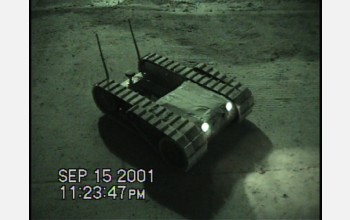
Photo of one of the search and rescue robots.
Credit: FEMA website
Download the high-resolution JPG version of the image. (303 KB)
Use your mouse to right-click (Mac users may need to Ctrl-click) the link above and choose the option that will save the file or target to your computer.

View Video
From September 12th - 23rd, National Science Foundation-funded researchers aided World Trade Center recovery efforts. University of South Florida engineering professor Robin Murphy and three graduate students took six urban search and rescue robots to "ground zero" in New York to help find survivors. Murphy's 11-day mission was a part of a larger team that recovered remains of six victims.
Murphy's robots are unique in that they are small and can maneuver in very tight situations. Tethered and fitted with headlights and cameras, these robots bring distinct advantages to a rescue mission the magnitude of the World Trade Center attacks where the damage is massive and recovery very dangerous.
Although they cost between $10,000 and $40,000, Murphy foresees search-and-rescue robots becoming standard equipment in fire departments across the country.
Credit: National Science Foundation & University of South Florida/CRASAR
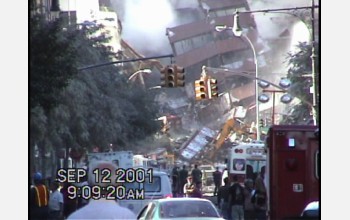
Damage at the collapse site.
Credit: University of South Florida/CRASAR
Download the high-resolution JPG version of the image. (80 KB)
Use your mouse to right-click (Mac users may need to Ctrl-click) the link above and choose the option that will save the file or target to your computer.
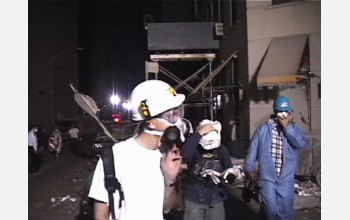
Graduate students Brian Minten and Jenn Casper near the collapse site.
Credit: University of South Florida/CRASAR
Download the high-resolution JPG version of the image. (274 KB)
Use your mouse to right-click (Mac users may need to Ctrl-click) the link above and choose the option that will save the file or target to your computer.
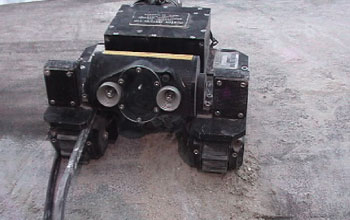
One of the search and rescue robots.
Credit: University of South Florida/CRASAR
Download the high-resolution JPG version of the image. (306 KB)
Use your mouse to right-click (Mac users may need to Ctrl-click) the link above and choose the option that will save the file or target to your computer.
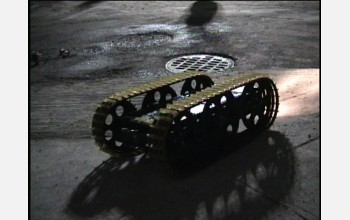
One of the search and rescue robots.
Credit: University of South Florida/CRASAR
Download the high-resolution JPG version of the image. (297 KB)
Use your mouse to right-click (Mac users may need to Ctrl-click) the link above and choose the option that will save the file or target to your computer.
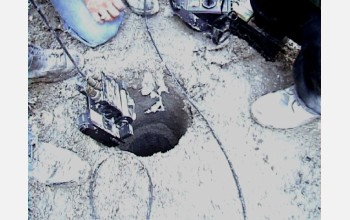
One of the search and rescue robots enters a sewer.
Credit: University of South Florida/CRASAR
Download the high-resolution JPG version of the image. (80 KB)
Use your mouse to right-click (Mac users may need to Ctrl-click) the link above and choose the option that will save the file or target to your computer.
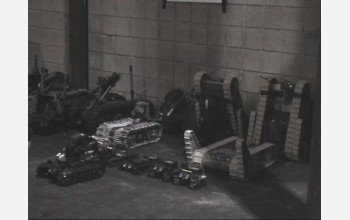
Group of search and rescue robots.
Credit: University of South Florida/CRASAR
Download the high-resolution JPG version of the image. (203 KB)
Use your mouse to right-click (Mac users may need to Ctrl-click) the link above and choose the option that will save the file or target to your computer.
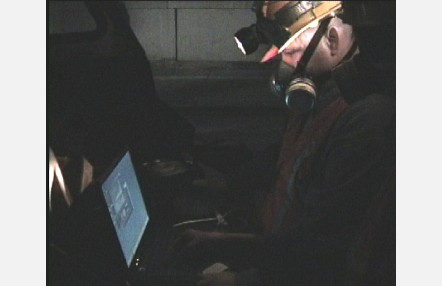
Operator and monitor.
Credit: University of South Florida/CRASAR
Download the high-resolution JPG version of the image. (253 KB)
Use your mouse to right-click (Mac users may need to Ctrl-click) the link above and choose the option that will save the file or target to your computer.
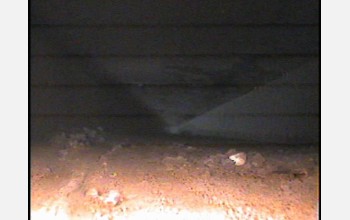
Robot's 'eye' view.
Credit: University of South Florida/CRASAR
Download the high-resolution JPG version of the image. (304 KB)
Use your mouse to right-click (Mac users may need to Ctrl-click) the link above and choose the option that will save the file or target to your computer.


